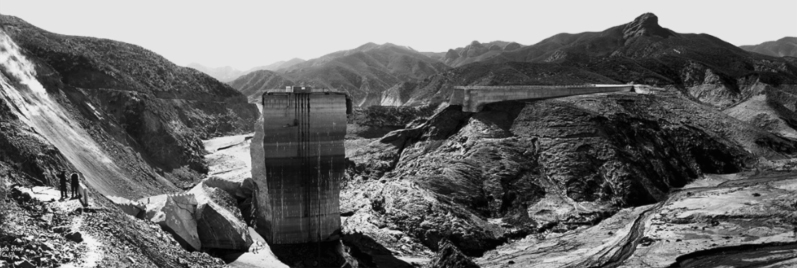|
|
California Oil Museum Highlights 'Lessons Learned' from St. Francis Dam Disaster.
California Oil Museum | February 15, 2018.
|
Santa Paula, CA — Three minutes before midnight on March 12, 1928, the St. Francis Dam collapsed, sending 12.4 billion gallons of water downstream. The resulting flood killed over 400 people, with 103 still missing to this day. The St. Francis Dam disaster is considered the second largest disaster in California history, in terms of loss of life, and is the largest man-made disaster in the state. The dam was erected in rural San Francisquito Canyon; floodwaters traveled down San Francisquito Canyon to the Santa Clarita Valley, then turned west following the Santa Clara River south of Piru, Fillmore, and Santa Paula, through unincorporated Ventura County, out to the Pacific Ocean. It forever changed the communities in its 54-mile destructive path. In remembrance of the 90th anniversary of the St. Francis Dam Disaster, the California Oil Museum will exhibit "When Dams Fail: Lessons Learned from St. Francis and Other Notable Incidents" from March 3, 2018 through July 8, 2018. This exhibit covers more than a century of time and provides a look into several of America's dreadful dam disasters, the impact on the lives of those affected, and the lessons learned through investigative research and retrospective evaluations. Understanding the underlying causes for dam failures is a critical component to preventing recurrence and future incidents. Visitors will learn reasons dams fail, including design flaws, operational inefficiencies, and natural or environmental causes, as well as safety measures that have been implemented to reduce the risks to human life, property, and the environment from dam related hazards. A special presentation will be given on Saturday, March 3, from 2 p.m. to 3 p.m. Archaeologist Anne Stansell will share her research findings on why the St. Francis Dam disaster has been largely forgotten on a state and national level, but tenuously remembered within the flood-zone. Seating for this special presentation is limited. The California Oil Museum is housed in the original headquarters of the Union Oil Company of California, a beautiful historical building which is listed on the National Register of Historic Places (NPS-86002619). The Museum is dedicated to enriching the lives of local citizens, county schoolchildren, and visitors from around the world, and encourages each guest to understand the significance of the petroleum industry and its California history, as well as develop an appreciation of the world of science. The California Oil Museum is located at 1001 E. Main Street in Santa Paula. The Museum is open Wednesdays through Sundays from 10:00 AM - 4:00 PM. Admittance is free, a suggested donation of $4 is appreciated. The California Oil Museum Foundation is a 501(c)(3) non-profit organization.
|
Santa Paula Candlelight Vigil 3/12/2018
Calif. Oil Museum Exhibit
Lancaster Cemetery 3/12/2018
Santa Paula 3/12/2018 (Video)
Events in Fillmore 3/17/2018
Piru Monument Dedication 3/18/2018
County of Los Angeles 3/13/2018 (Video)
|
The site owner makes no assertions as to ownership of any original copyrights to digitized images. However, these images are intended for Personal or Research use only. Any other kind of use, including but not limited to commercial or scholarly publication in any medium or format, public exhibition, or use online or in a web site, may be subject to additional restrictions including but not limited to the copyrights held by parties other than the site owner. USERS ARE SOLELY RESPONSIBLE for determining the existence of such rights and for obtaining any permissions and/or paying associated fees necessary for the proposed use.








